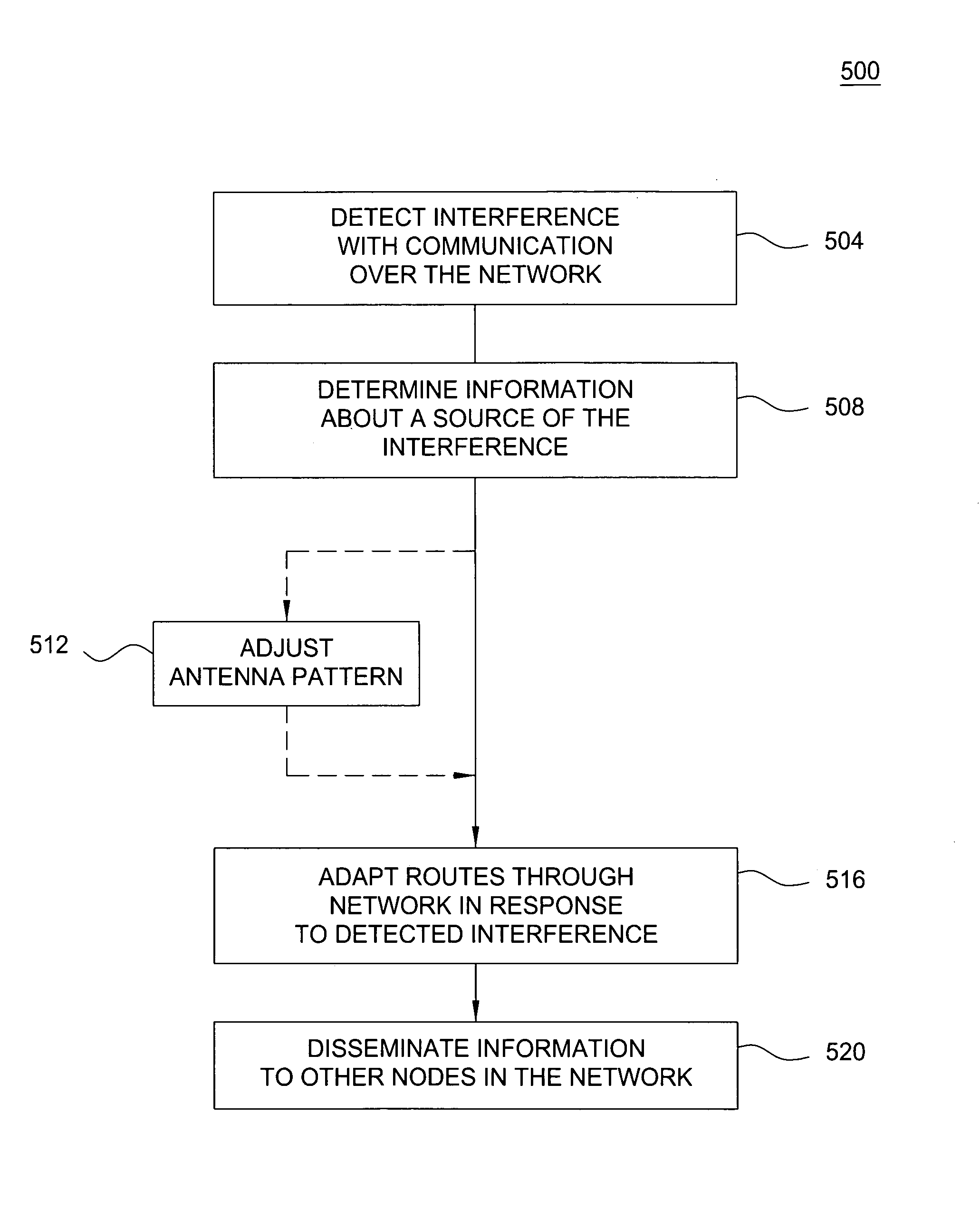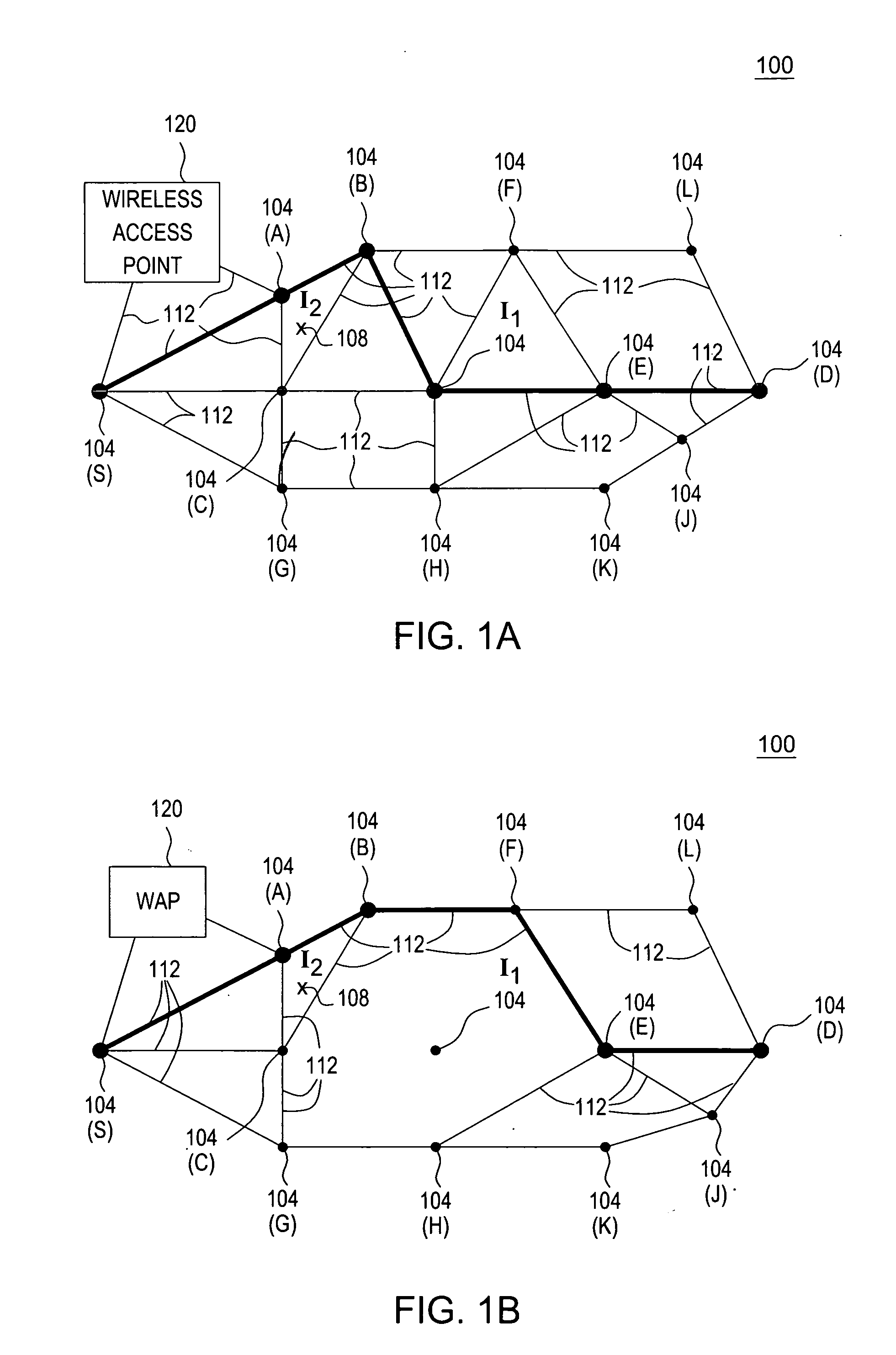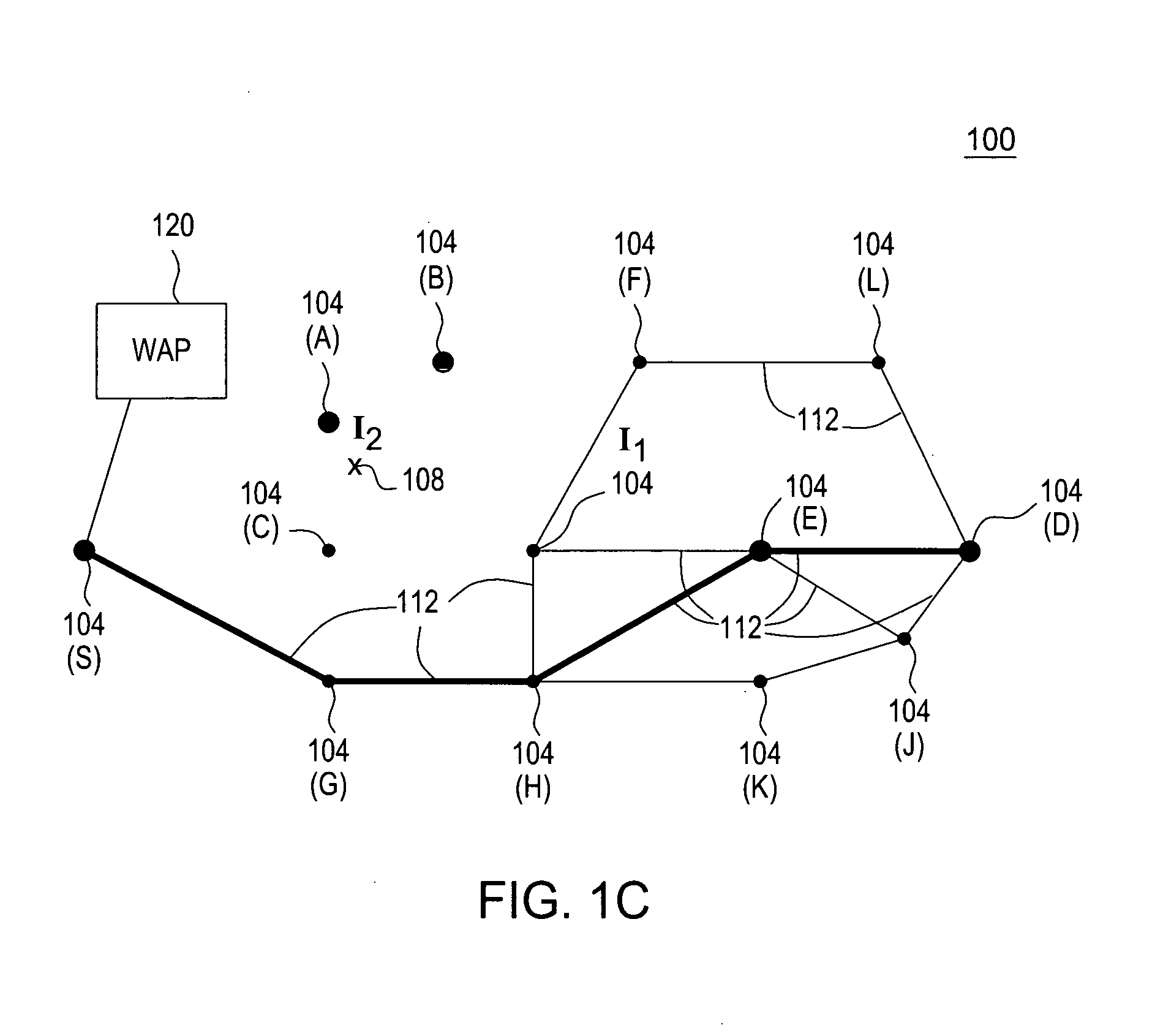Interference mitigation and adaptive routing in wireless ad-hoc packet-switched networks
a packet-switching network and wireless communication technology, applied in data switching networks, frequency-division multiplexes, instruments, etc., can solve problems such as network interference, other forms of interference, and impede overall network performance, and achieve the effect of reducing interferen
- Summary
- Abstract
- Description
- Claims
- Application Information
AI Technical Summary
Benefits of technology
Problems solved by technology
Method used
Image
Examples
Embodiment Construction
[0022]FIG. 1A shows an embodiment of a multiple hop (multi-hop) wireless communications network 100 constructed in accordance with the principles of the invention. The network 100 is a packet-switched network in which messages are divided into packets that are transmitted individually over the network 100 and reassembled at their destination to produce the message. The network 100 includes a plurality of computing (or electronic) devices 104 in communication with each other over a shared medium to form a wireless local area network (WLAN). In a shared medium, all computing devices 104 within range of a transmitted communication can hear that communication. In one embodiment, an effective range of communication between computing devices 104 is approximately 150 to 200 feet, which is typically referred to as “short range.” The paths of communication between computing devices 104 that are within communication range of each other are represented by communication links 112.
[0023]Generall...
PUM
 Login to View More
Login to View More Abstract
Description
Claims
Application Information
 Login to View More
Login to View More - R&D
- Intellectual Property
- Life Sciences
- Materials
- Tech Scout
- Unparalleled Data Quality
- Higher Quality Content
- 60% Fewer Hallucinations
Browse by: Latest US Patents, China's latest patents, Technical Efficacy Thesaurus, Application Domain, Technology Topic, Popular Technical Reports.
© 2025 PatSnap. All rights reserved.Legal|Privacy policy|Modern Slavery Act Transparency Statement|Sitemap|About US| Contact US: help@patsnap.com



